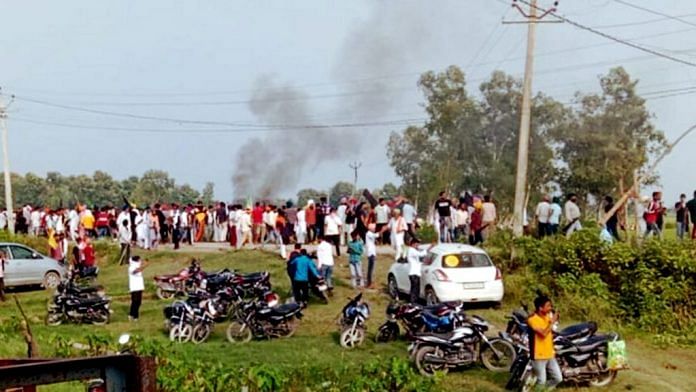At times when I have felt disillusioned by the state of our democracy and politics, I have put it to the “Mahatma Gandhi test” to understand how bad the situation is. This test is centred on the fundamental question: “Where would Gandhi be today if he were alive?” The answer invariably underscores the grim realities of our times. And so when the news of the deaths of protesting farmers in Lakhimpur Kheri trickled in, I couldn’t help but ask: Where would Gandhi be today if he were alive?
Gandhi would have probably set out to visit Lakhimpur Kheri and forge peace between the protesting farmers and the Uttar Pradesh government. Little would he have known that in this new India, he might have been placed under house arrest like Samajwadi Party’s Akhilesh Yadav or detained on his way to Lakhimpur Kheri by the UP Police like they detained Congress’ Priyanka Gandhi. Worse, he may have been accused of sedition or even slapped with the draconian UAPA. But one thing is certain: Gandhi would have struggled to recognise this India.
Gandhi saw the right to peaceful protest as a fundamental right of all citizens. He would rally the masses, lead peaceful movements, question the mighty British, and win battles without firing a bullet or mowing down his enemies. But over the last couple of years, the corridors of power have set a dangerous template for dealing with protest and dissent.
Union MoS Ajay Mishra’s threat that he would set the protesting farmers right in two minutes is, therefore, not an aberration but rather symptomatic of a larger pattern to the criminalisation of protest in India. It reflects a political ideology that associates dialogue and negotiations with weakness, and authoritative stubbornness with strength. It speaks volumes about a government so insecure that it would rather mimic Xi’s China in labelling dissent with treason than engage with its countrymen like Gandhi.
The violence at Lakhimpur Kheri is also in line with the new democratic normal in our country. Acts of lynching, hate speeches, vandalism on university campuses, and crimes against women and minorities have largely been condoned by the powers that be. At times, the prime minister himself has led the dog whistling such as when he suggested that anti-CAA protestors could be identified by their clothes. And not so long ago, a Union minister had publicly called for shooting traitors, while another had put garlands around those accused of lynching. Little wonder then right-wing extremists and vigilantes feel emboldened and function with impunity.
Also read: These 53 videos tell the Lakhimpur Kheri story — before, during & after the 3 Oct violence
It is this sense of political patronage and protection that perhaps encouraged first, the minister to intimidate and warn the protesting farmers to fall in line, and then his cavalcade to mow down four peaceful protestors. That the minister continues to be in office despite a probe against his son, who was allegedly in the car that ran over the protestors, says as much.
Gandhi would have struggled to understand what exactly did he and countless others achieve on 15 August 1947, when 75 years later basic freedoms and rights continue to be threatened in an independent India. Life would have come full circle for the Mahatma. The British charged him with sedition in 1922 and who knows, he may have been labelled an “anti-national” and charged with sedition for daring to speak up for the protesting farmers.
From Delhi to Lucknow, Gandhi’s portrait adorns all corridors of power. His 152nd birth anniversary saw politicians of all hues celebrate him but Lakhimpur Kheri is a reminder that Gandhi and his values remain alive only in portraits and textbooks. The nation’s collective conscience must be repeating Gandhi’s last words, “Hey Ram”!
The author is a student at University of Calcutta. Views are personal.




